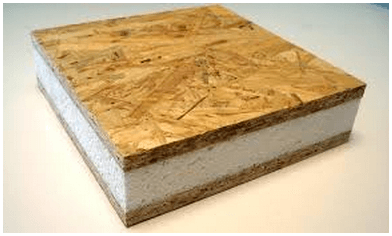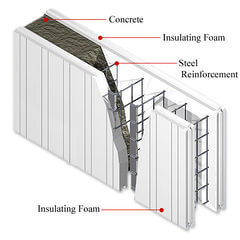What are some of the most popular energy-efficient materials used in houses today?
There are countless materials used when building a house, but not all of them are created equal. Some materials are more energy-efficient than others and can help to keep your home cooler in the summer and warmer in the winter. Here are some of the most popular energy-efficient materials used in houses today:
Low-E Windows.
Low-E windows are a type of energy-efficient windows that are coated with a special film. This film (also known as a glazing) helps to reflect UV rays from entering the house, keeping your home warmer in the winter and cooler in the summer. Hence the term Low-E stands for low emissivity, meaning they prevent heat from radiating through the glass.
Low-E windows are becoming increasingly popular among homeowners and builders alike, as they can help to reduce energy costs. According to energy.gov, windows may be responsible for up to 30% of your home’s heat gain and loss throughout the year. So, installing windows with Low-E glazing could mean huge savings on your utility bills.
If you want to take the energy savings a step further, look at double-paned, argon-filled Low-E windows.
Structural Insulated Panels (SIP).

Structural Insulated Panels, or SIP, are a type of energy-efficient building material. SIPs are made from two layers of Oriented Strand Board (OSB) or plywood with insulation in between. The OSB or plywood helps to add strength and rigidity to the panel, while the insulation helps to insulate your home and maintain a constant temperature. These panels can be used for everything from the floor to the ceiling and everything in between.
By some estimates, SIPs can reduce your home’s energy consumption by up to 40%, which is a welcomed saving by everyone these days.
Insulated Concrete Forms (ICF).
Like the SIPs, Insulated Concrete Forms combine two different building materials (concrete and insulation) to create a more energy-efficient product. ICFs are made from concrete poured between two layers of foam insulation. This combination creates a strong, durable, and energy-efficient wall that can help to keep your home comfortable all year long.

While ICFs are more expensive than traditional wood framing and concrete, they can save you money in the long run by reducing your energy costs.
Open Cell and Closed Cell Insulation.
Gone are the days of rolled batt insulation. For those serious about their energy savings, spray-in foam insulation is the way to go. There are two different types of spray in insulation, open cell and closed cell.
Open-cell insulation is made from a material containing small air pockets, which makes it less dense than closed-cell insulation. This makes it better at resisting heat flow, but it also means that it is not as strong as closed-cell insulation. Closed-cell insulation is made from a material that does not have any air pockets, making it denser than open cell insulation. This makes it better at resisting moisture and mold, but it also means that it is not as good at resisting heat flow.
They’re extremely energy efficient when the two are used together (i.e., 1″ of closed-cell with 5″ of open-cell).
Composite Lumber.
So many things around us are made of recycled products, and you may be surprised to find out that the floor you’re standing on might just be made from recycled materials.
Composite lumber made from recycled plastic and wood fibers is becoming increasingly popular among builders and homeowners. This lumber is durable, low-maintenance, and, most importantly, energy-efficient. Composite lumber can be used throughout your home and is a much greener alternative to traditional wood products.
Why are these materials so popular among homeowners and builders alike?
Homebuilders are getting creative with their materials to build houses and are always looking for ways to reduce energy costs. The most popular energy-efficient materials for houses help keep your home comfortable all year long while also saving you money on your energy bill. Low-E windows, Structural Insulated Panels, and Composite Lumber are just a few of the most popular energy-efficient materials today.
So if you’re looking to build an energy-efficient home, be sure to ask your builder about these materials. They might even have some additional ideas of their own.
Are there any drawbacks to using these materials in a house build project?
The biggest drawback to using these materials is the cost. Low-E windows, Structural Insulated Panels, and Composite Lumber can all be more expensive than traditional materials. However, the long-term savings on your energy bill can make up for the initial investment.
Another thing to consider is that these materials are not always available in all areas. If you live in an area where these materials are not readily available, you may have to special order them, which can add to the cost of your project and cause delays.
You can use many different materials to build a house. But not all of these materials are created equal-some are more energy-efficient than others. In this article, we explored some of the most energy-efficient materials used for houses. We looked at why they are so popular among homeowners and builders alike and what benefits they can offer.
Energy-efficient materials are an excellent choice for those who want to build an energy-efficient home. They can help reduce your energy bills, and they can also be better for the environment. If you’re looking to build an energy-efficient home, then consider using one of these materials in your build.
